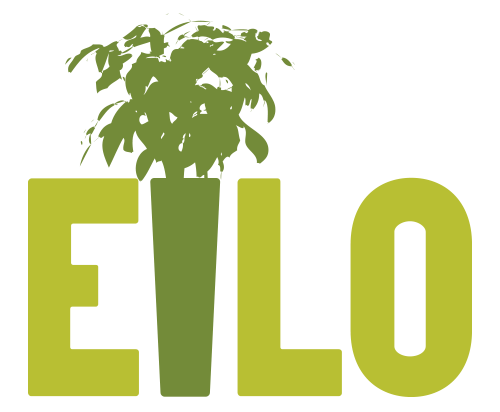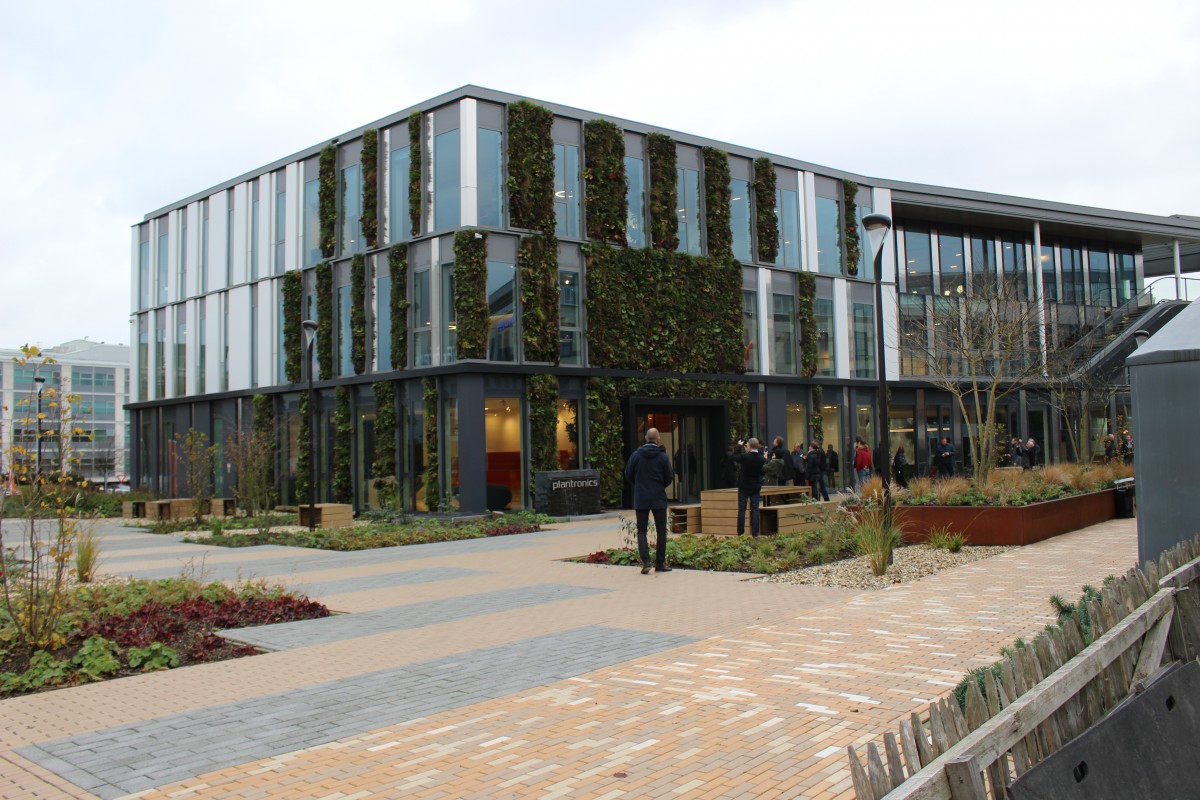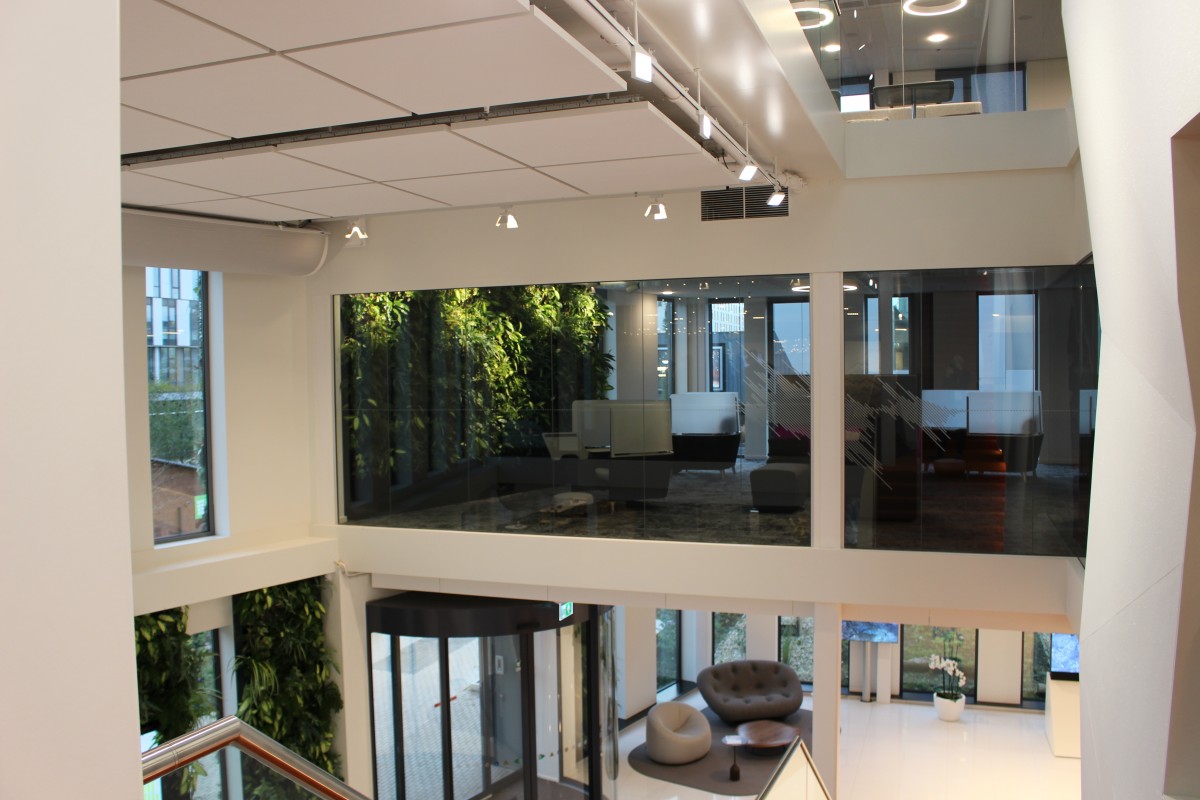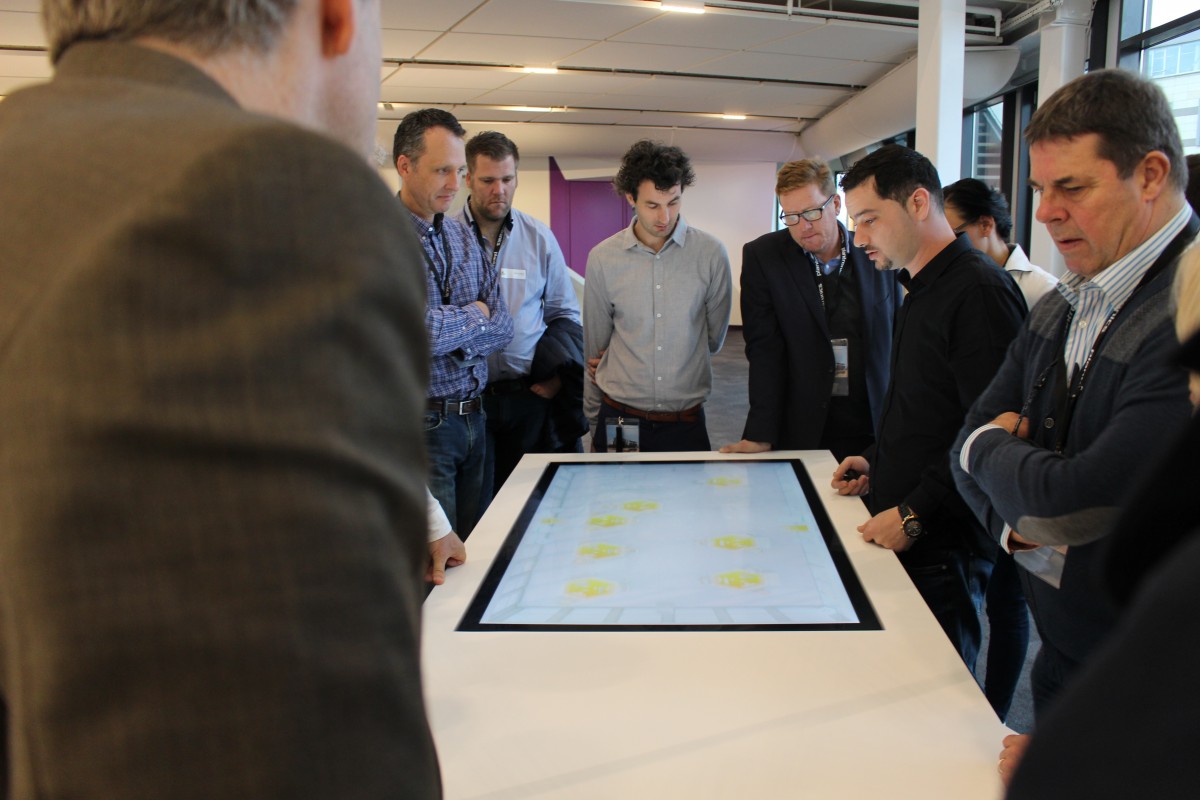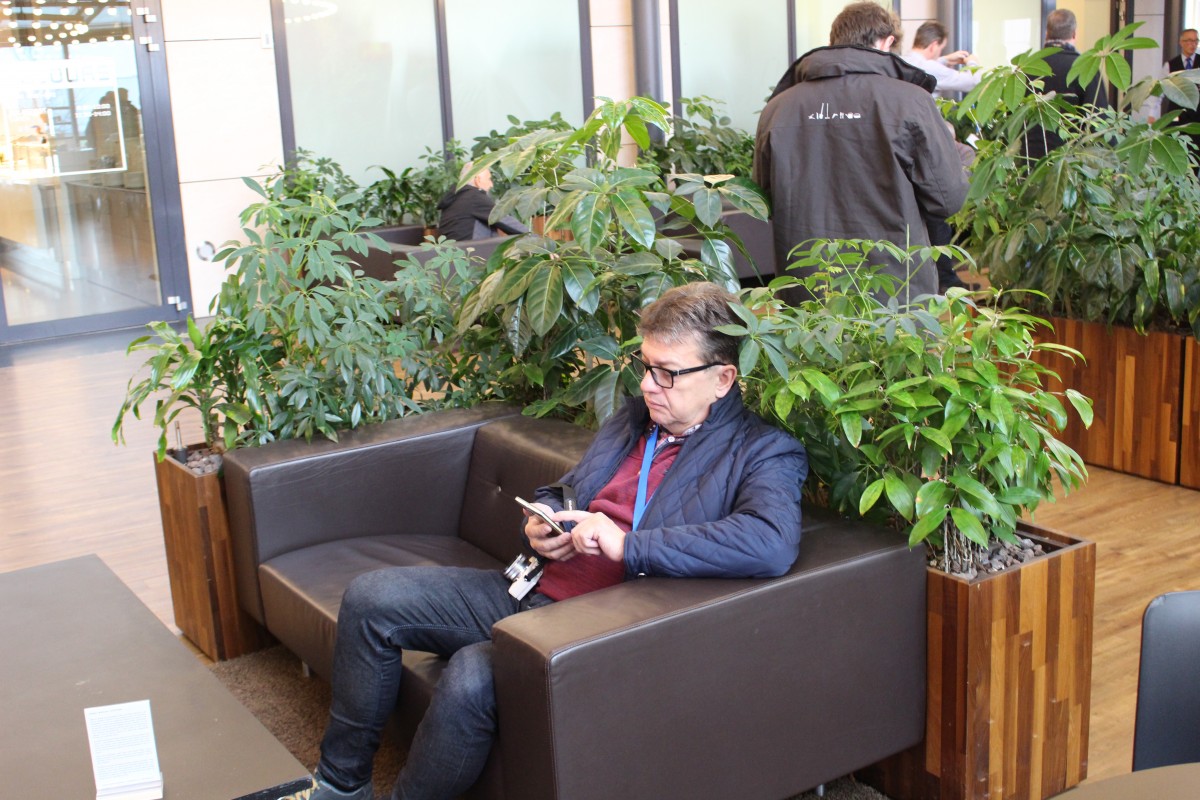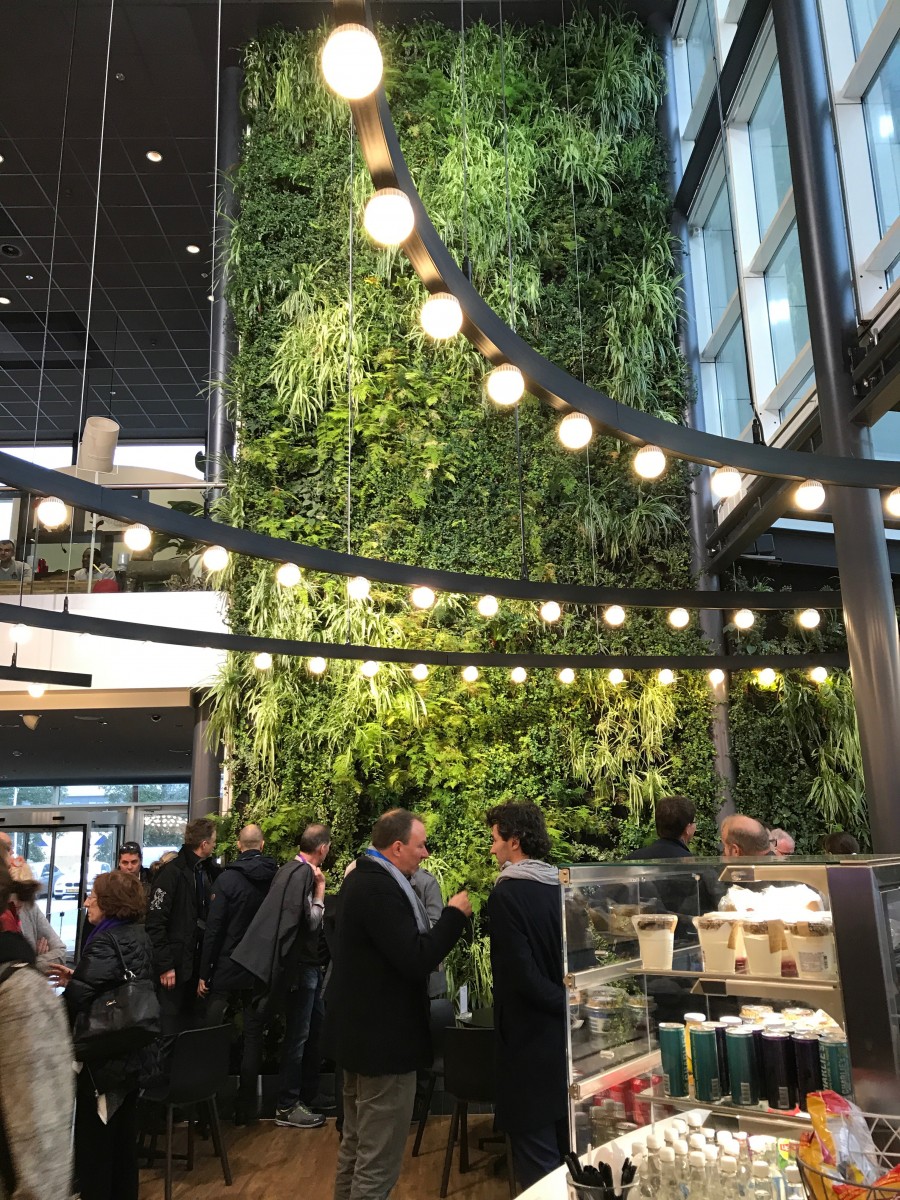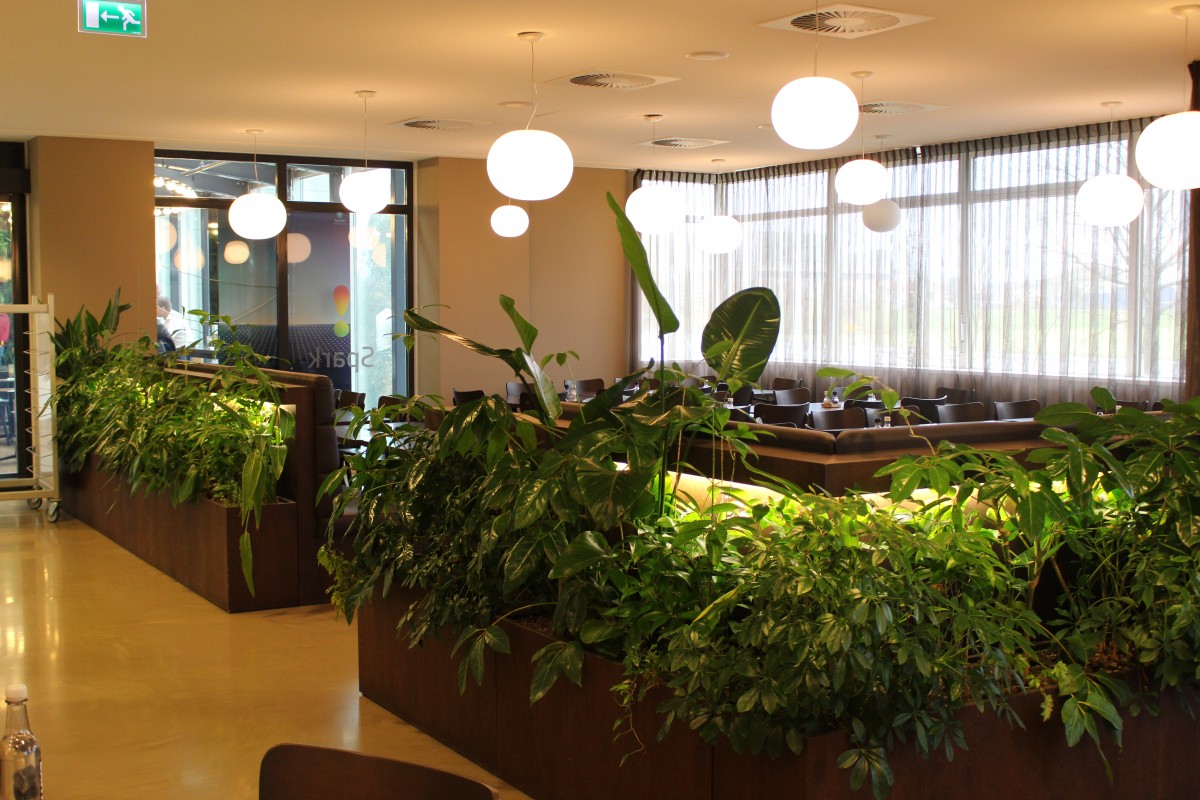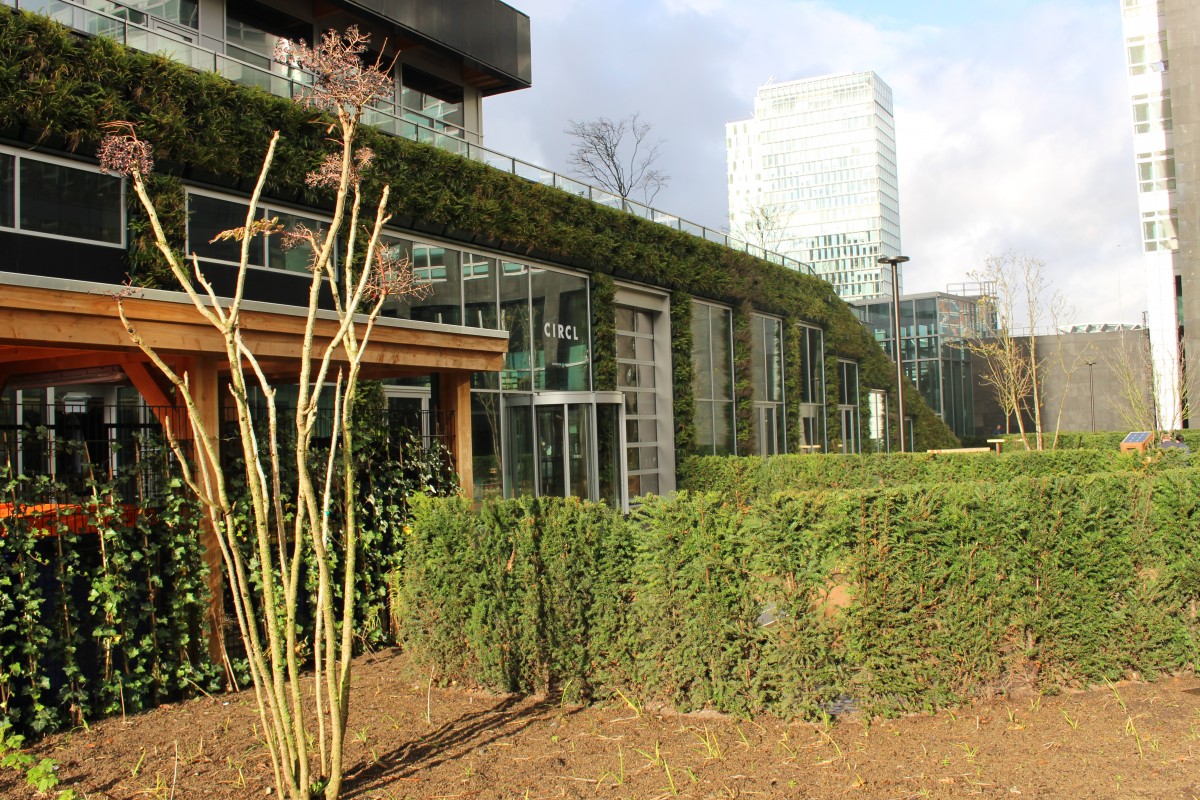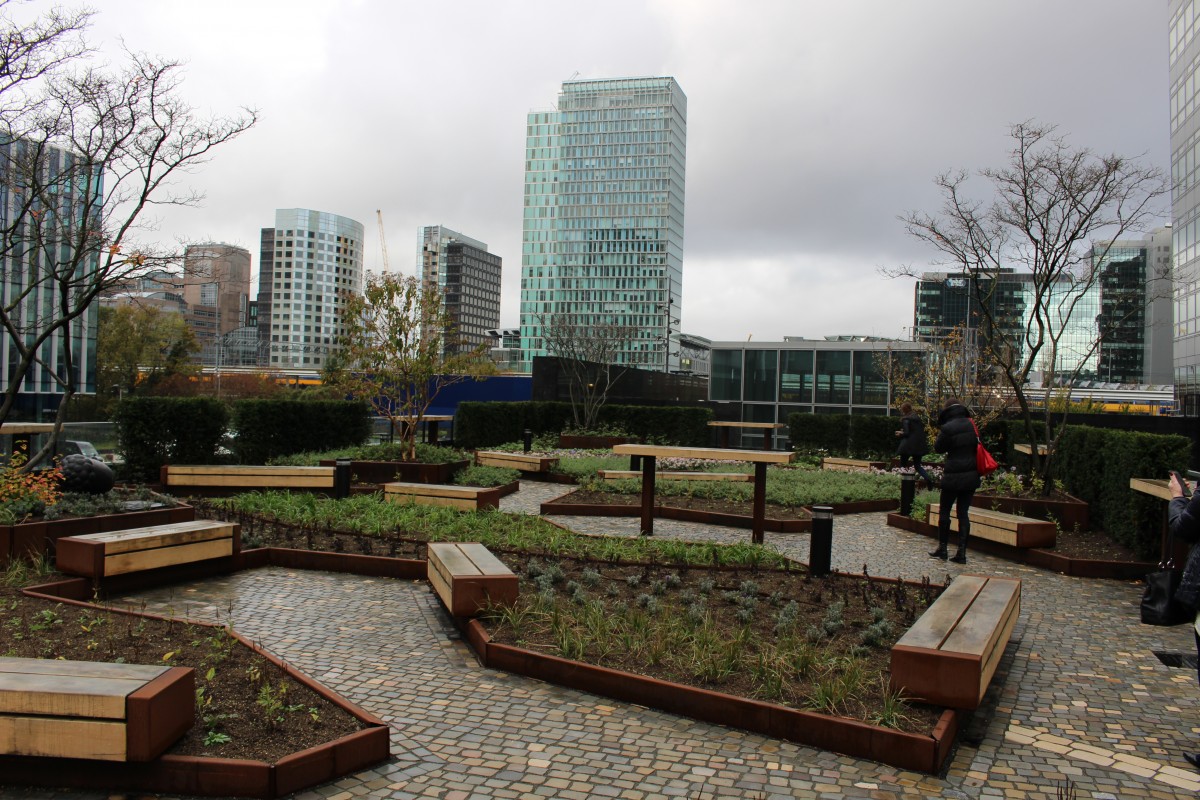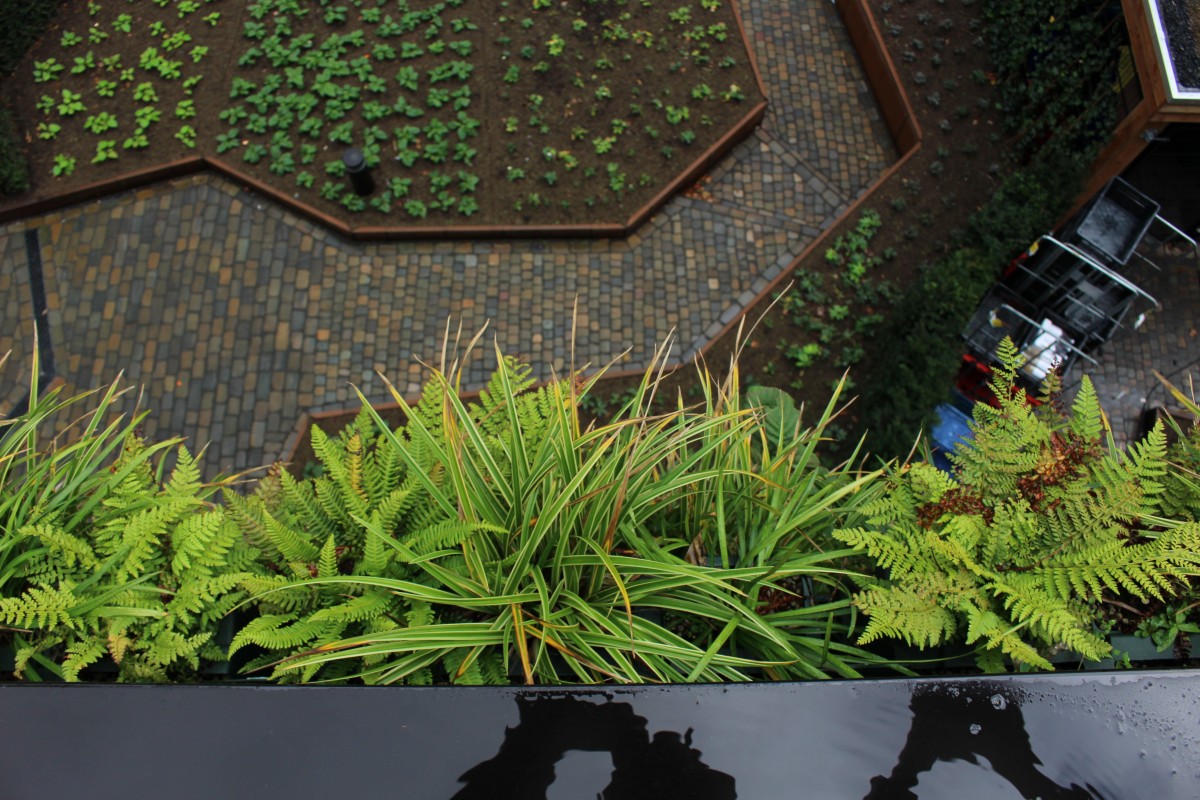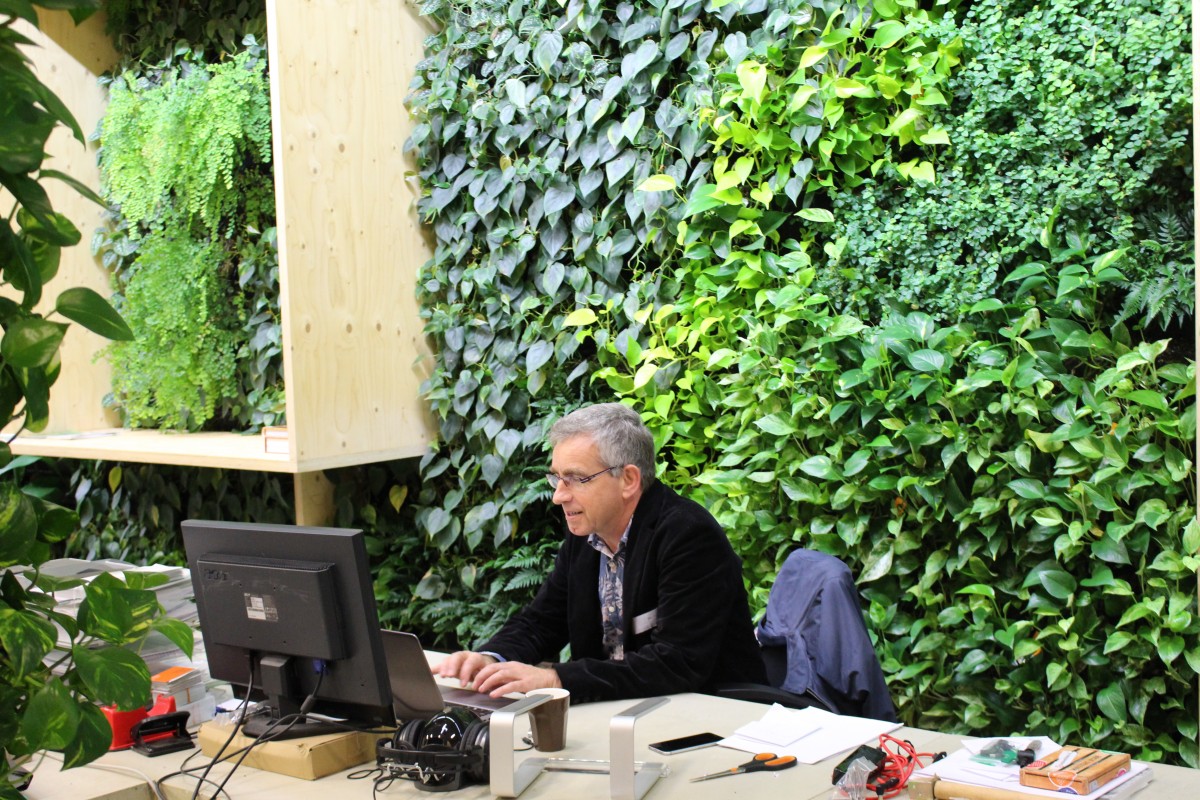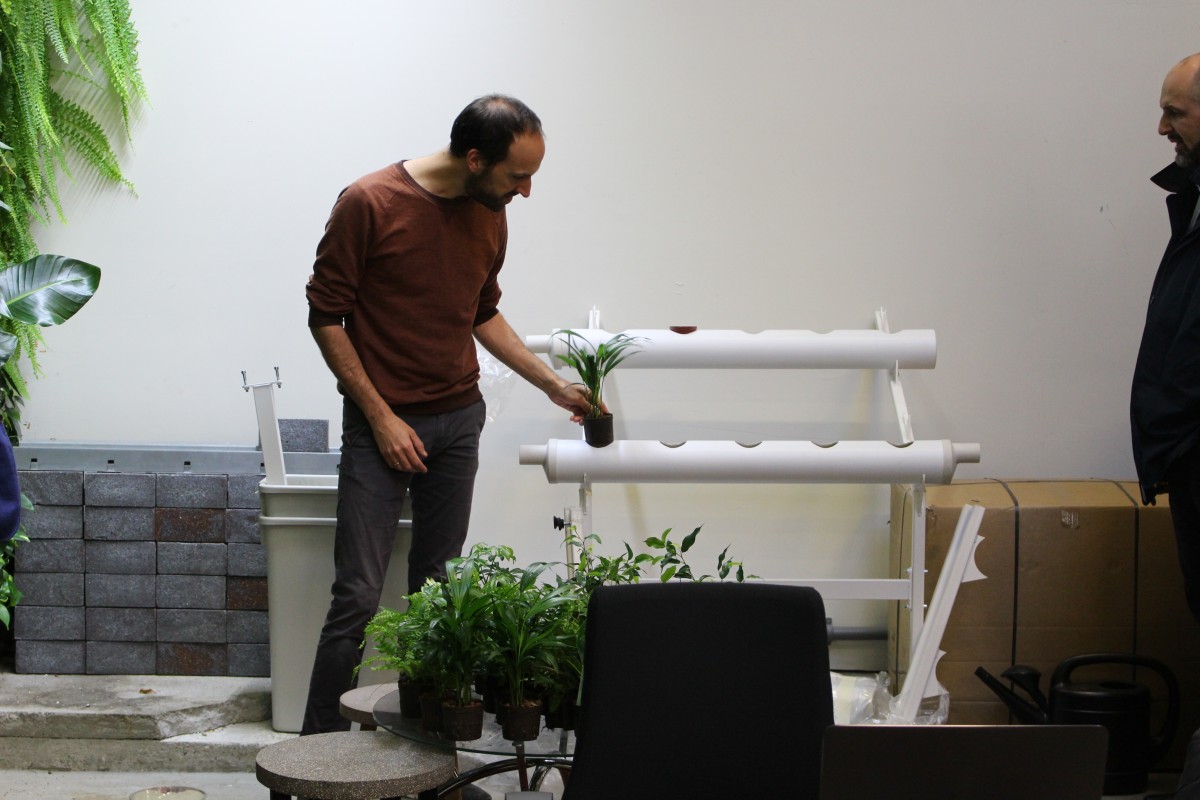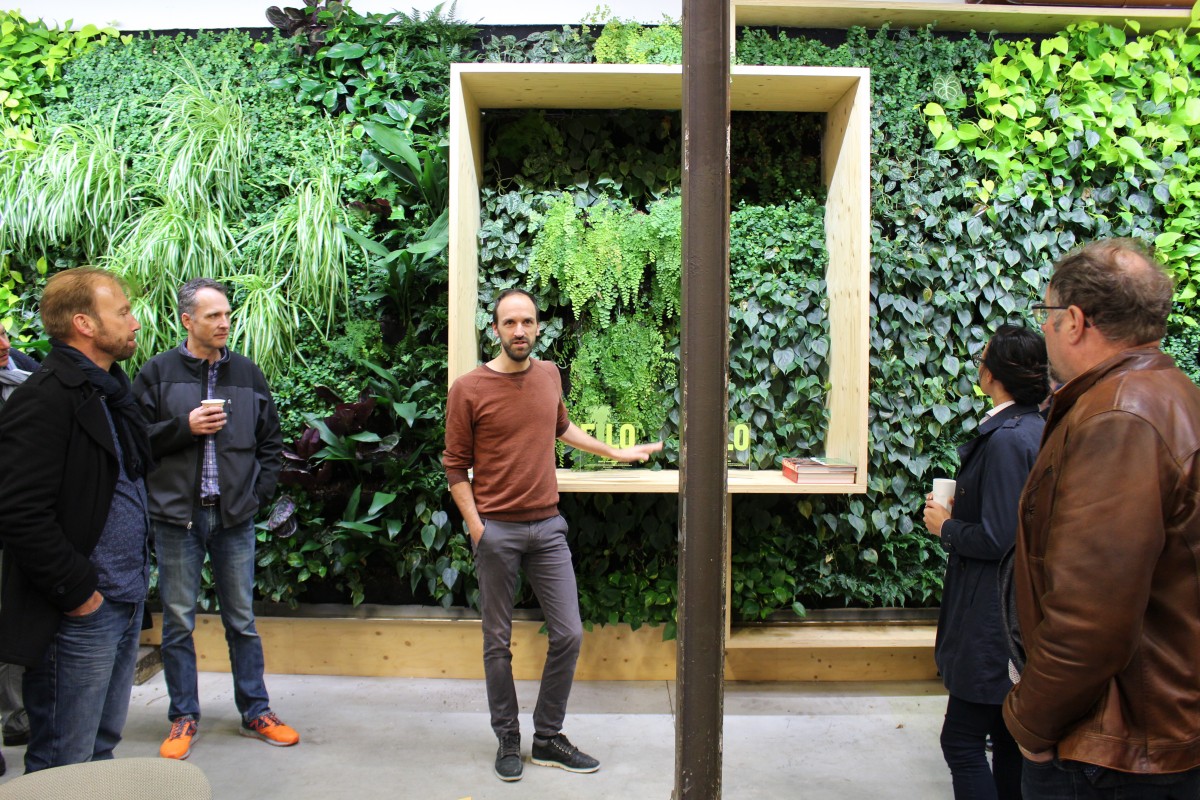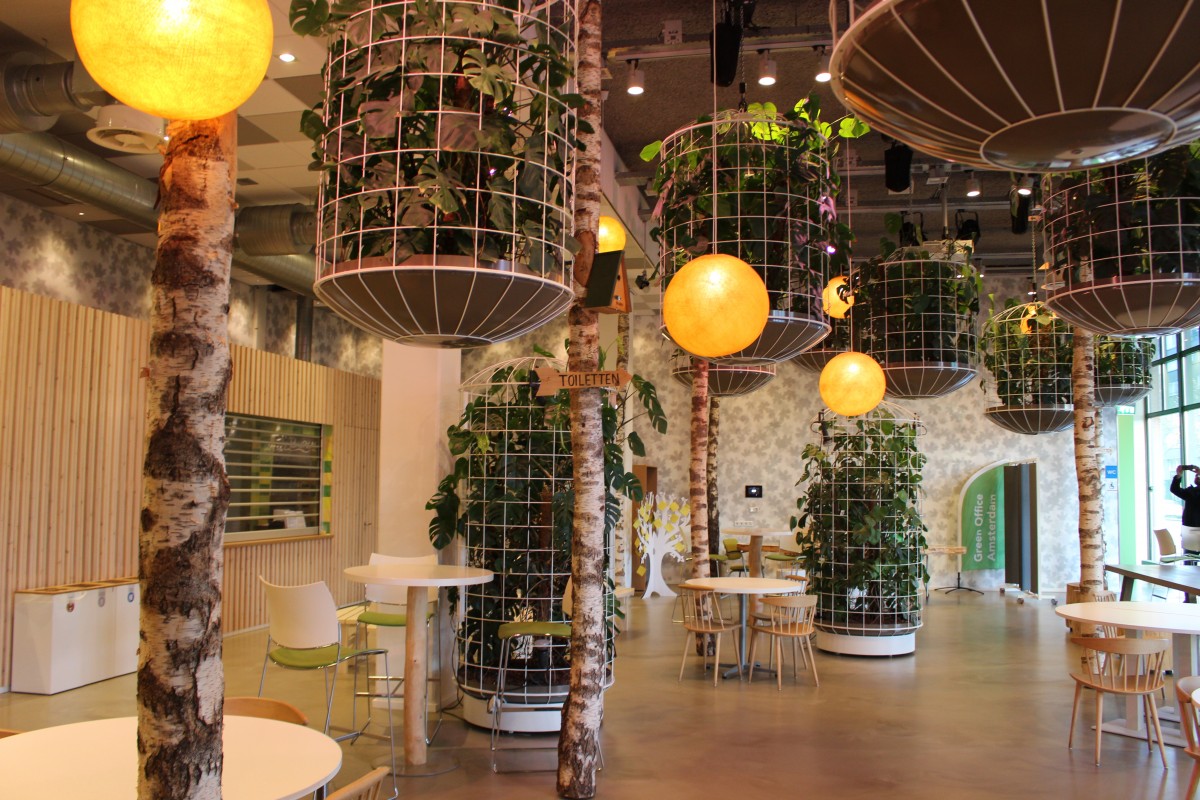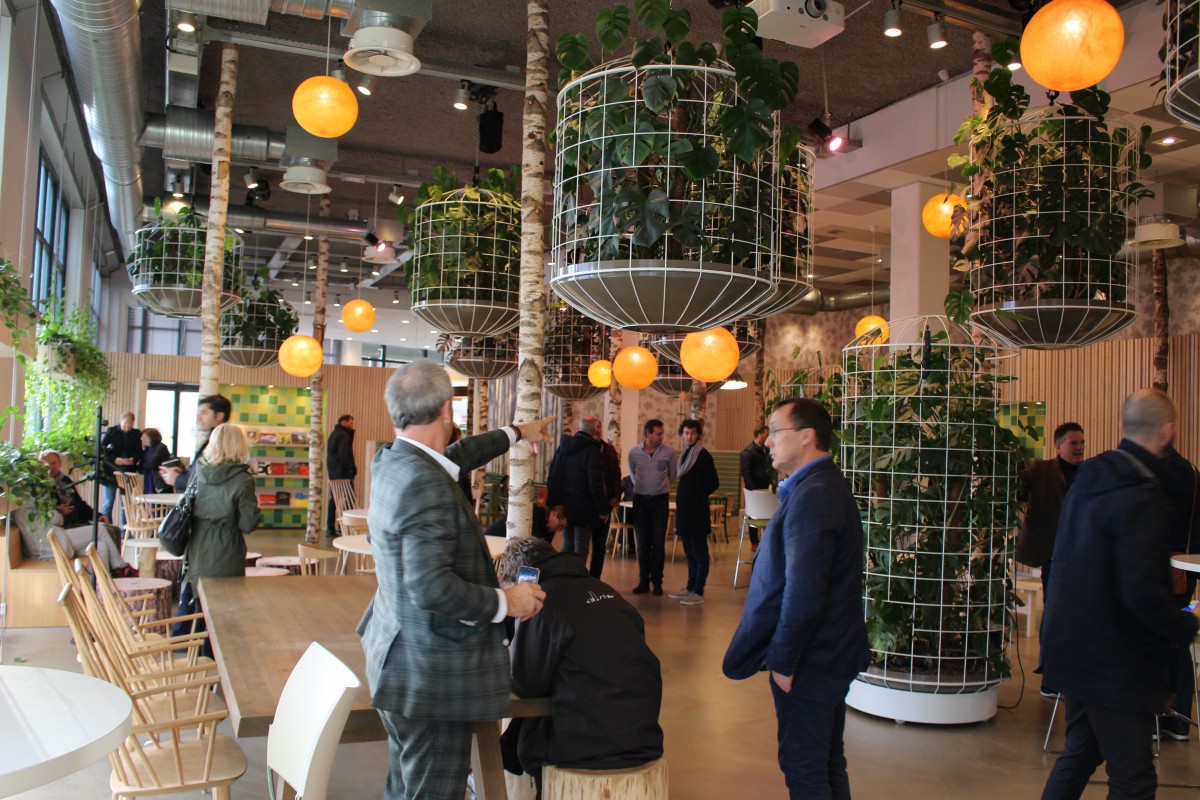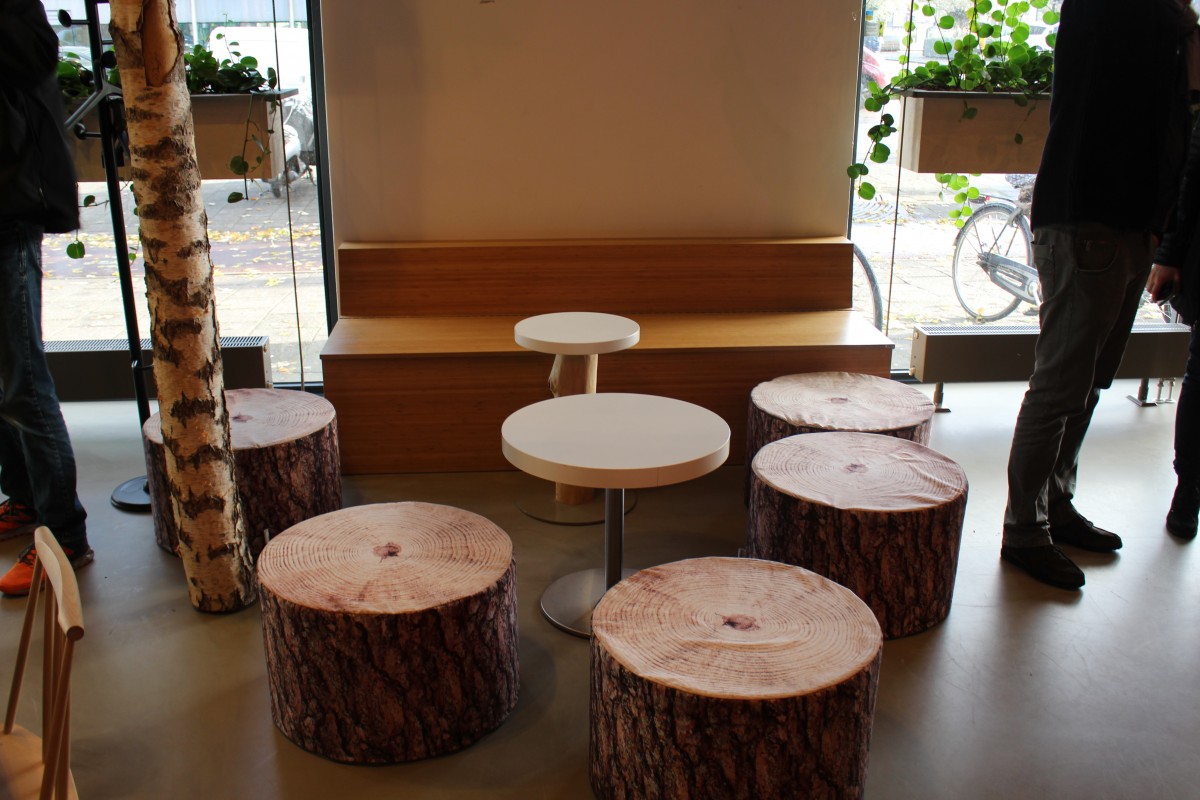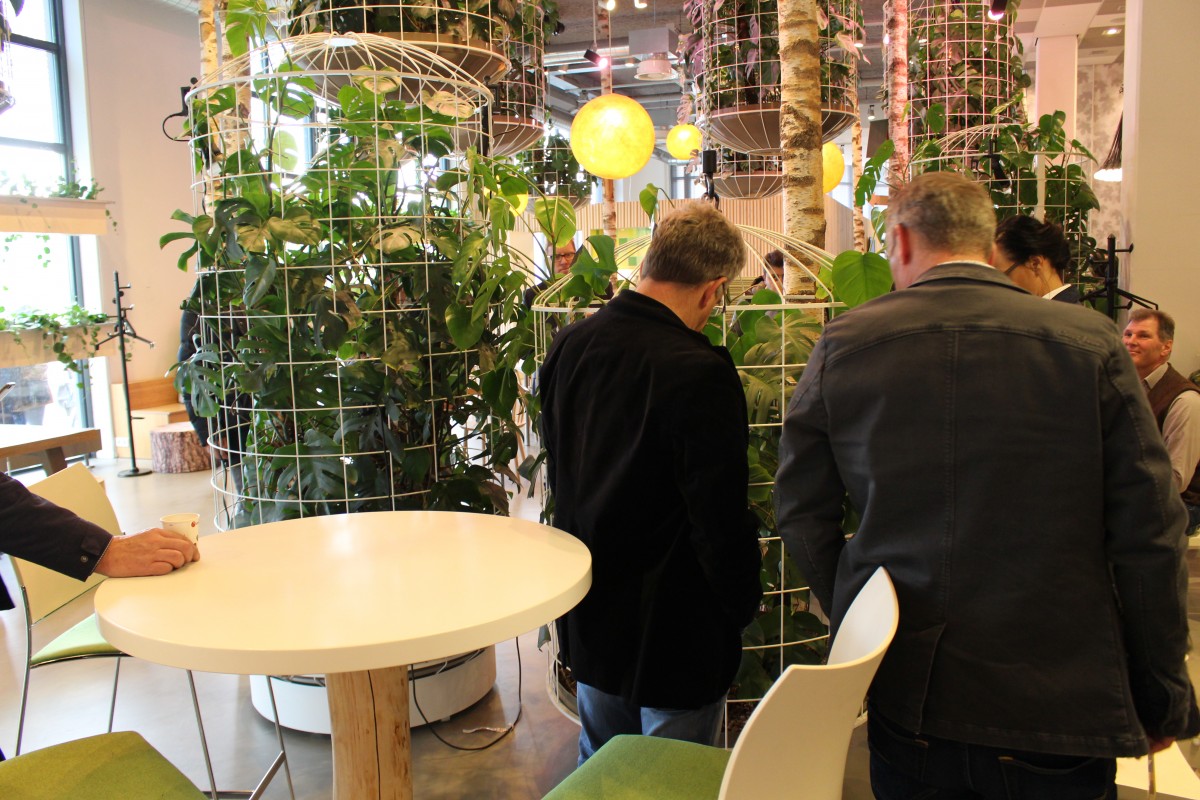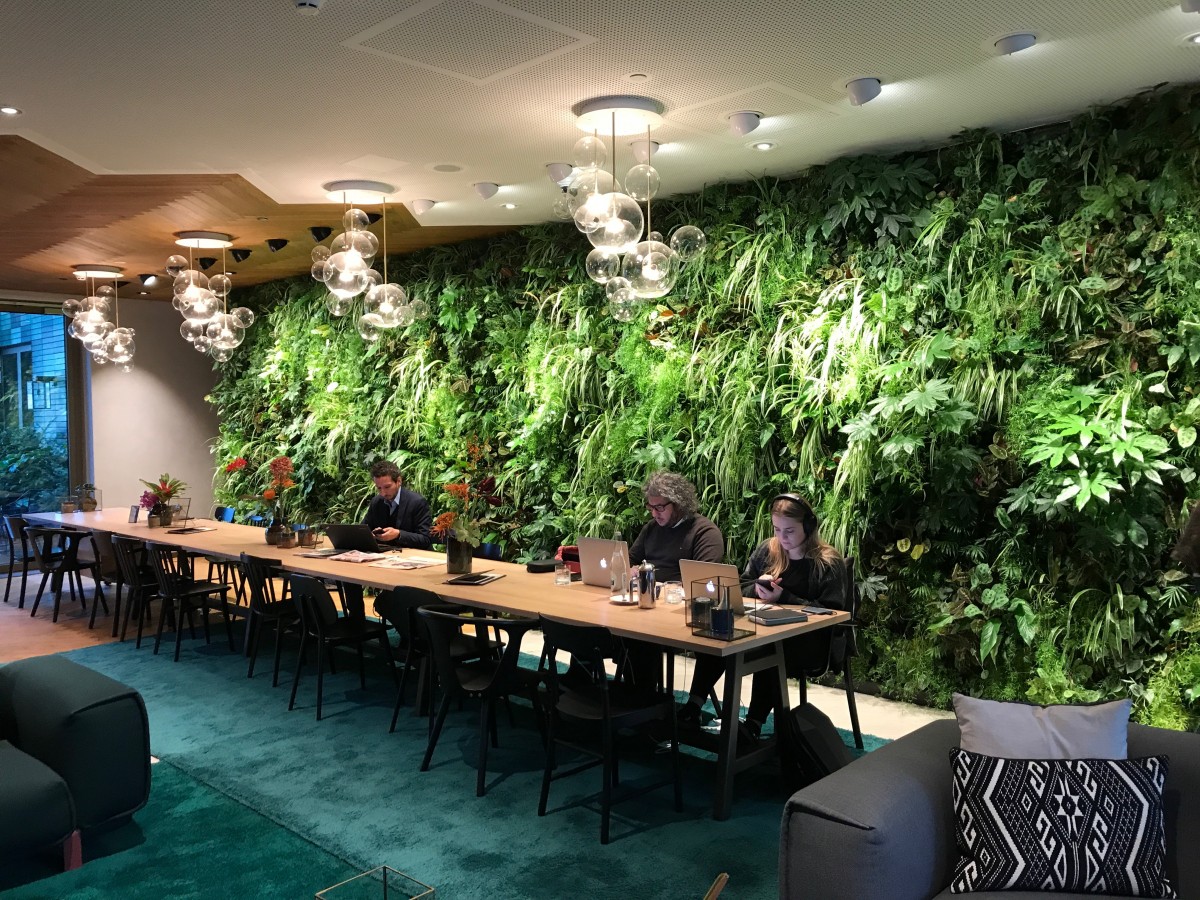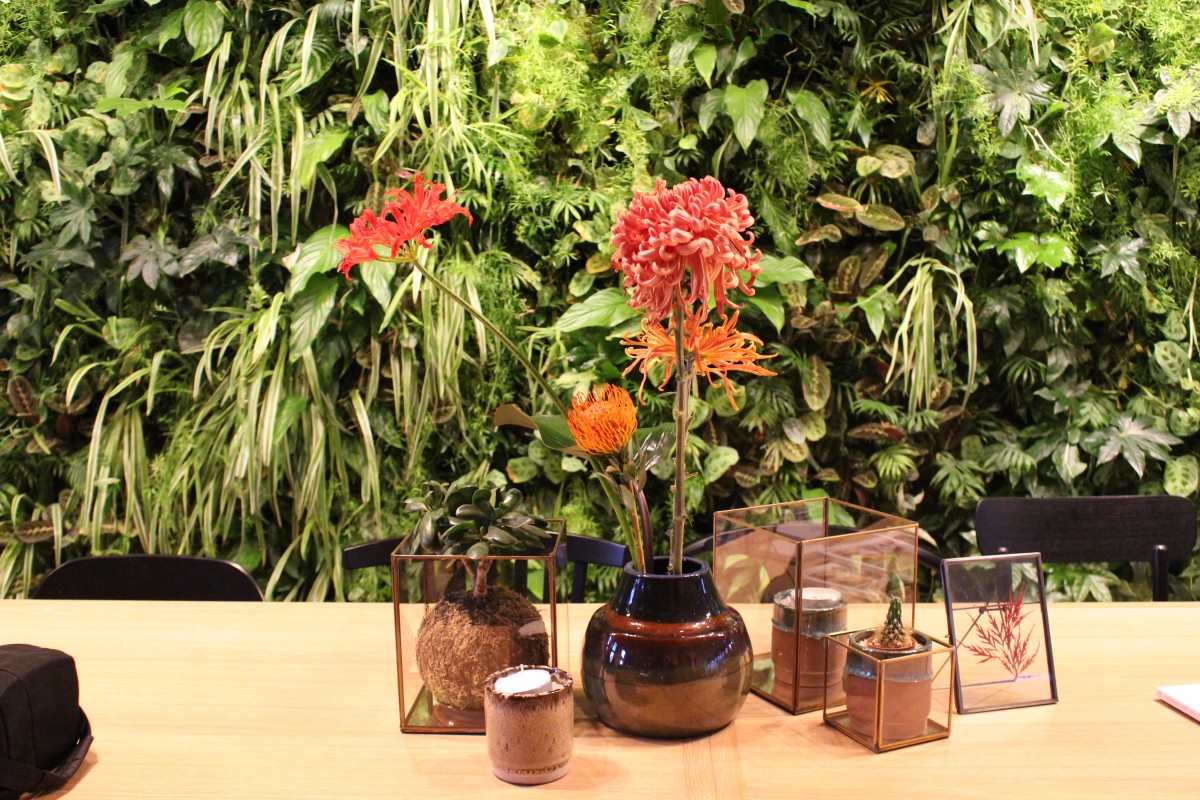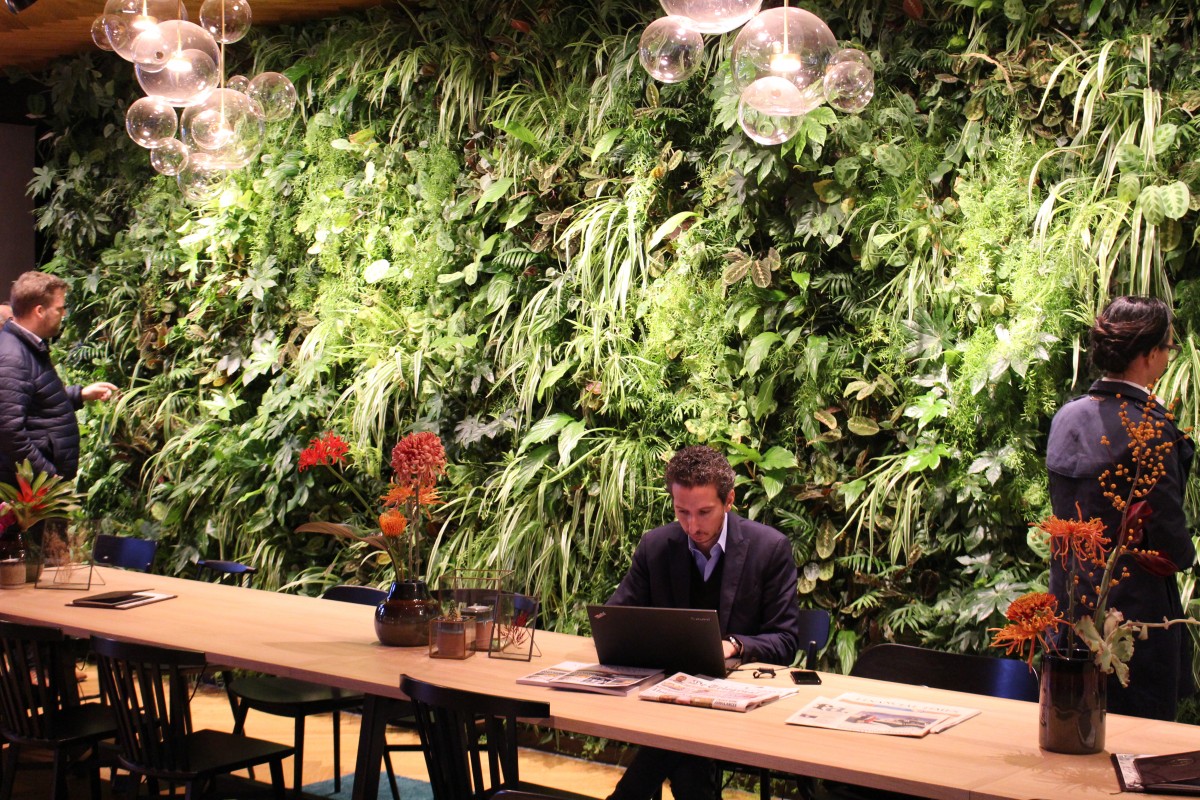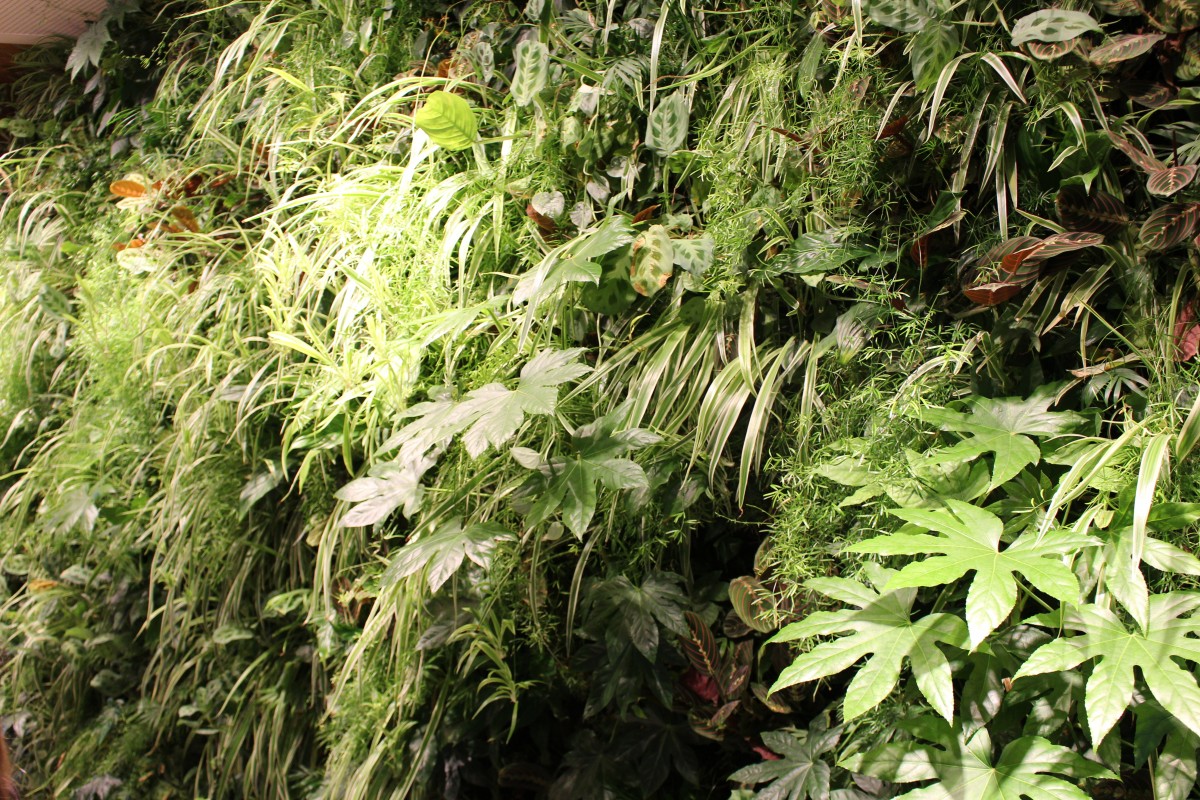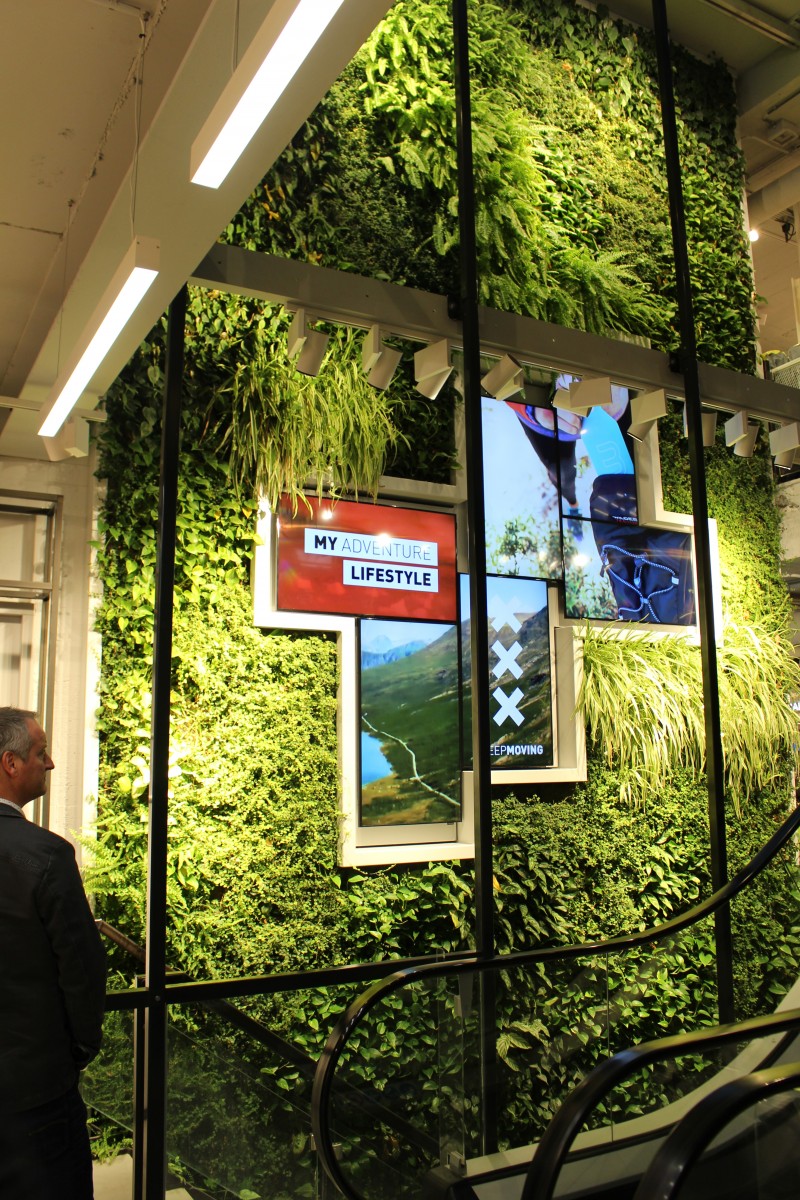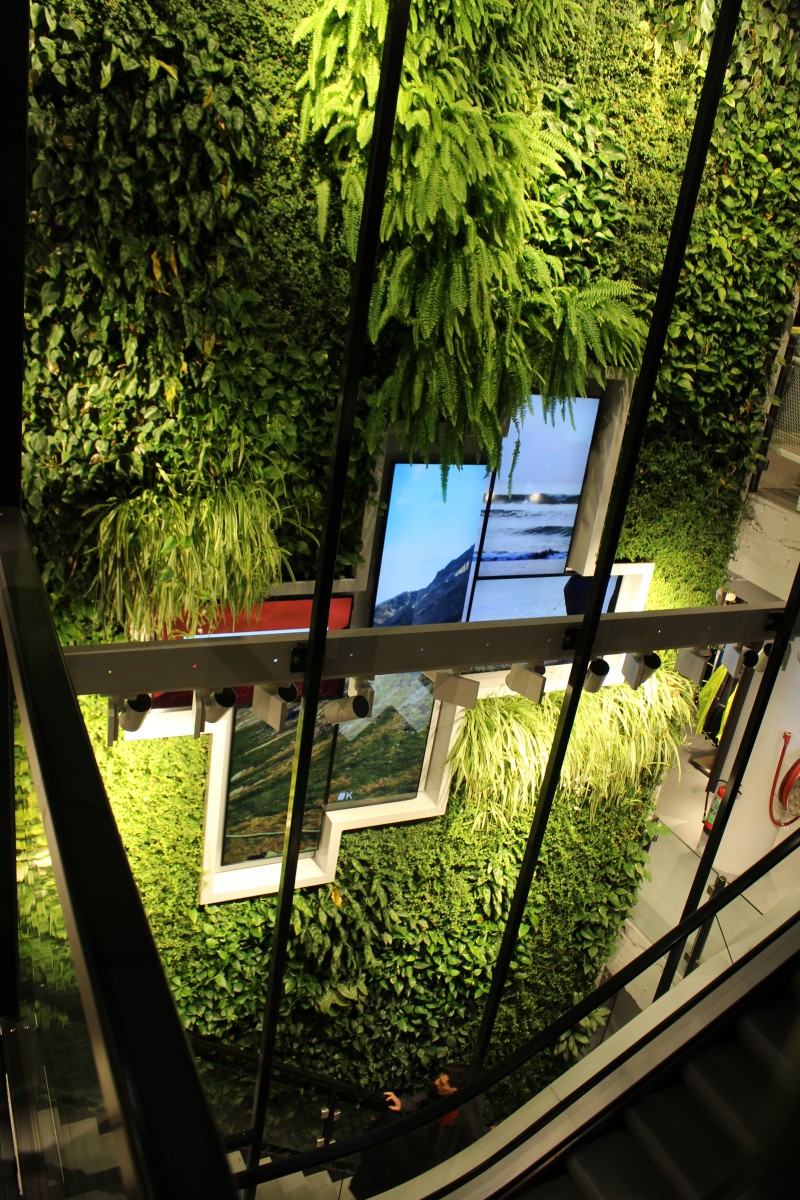Green has become a product, and green has become mainstream!
EILO, the European Interior Landscaping Organisation recently organised their third annual excursion, which this year took place in and around Amsterdam. It was especially held in early November to enable participants to also visit the large horticultural fairs. As usual, the excursion started on the Thursday afternoon with a number of inspiring speakers. The noticeable trend this time was that besides interior landscapers, young start-ups and established suppliers are also increasingly thinking in terms of (ready-to-use) products. In other words: green has become a product and green is becoming mainstream.
Green contributes significantly to the health of employees
The first speaker was US researcher Elizabeth Nelson. When she suffered a burnout, after a brief but intensive career in advertising, she made a complete switch. She started researching why modern working environments are so unhealthy. Why do ever more people get overstrung and suffer from burnout? And more importantly, what can we do to reverse that trend? During her research she experimented with four interventions on the work floor: diet, stress/relaxation, biophilia/green and light. And the good news is that tremendous health benefits can be achieved with all these interventions.
Combining green and water enhances the effect significantly
Tonny van Hal, from the German company Art Aqua, elaborated on this theme. The key focus for Art Aqua is on new and green works. From massive factories to lifeless office environments; he observed that working environments are increasingly becoming working landscapes, in which green can play an obvious and connecting role. The product which he went on to explain was the water wall. A water wall is a closed-system unit where water flows across a glass wall, absorbing large amounts of particulate matter, cooling the air and increasing the humidity of the room it is in. The latter is an added bonus as the temperature of humid air rises more rapidly, which will save 6% on energy costs. On top of which, water has a pleasant acoustic effect. The babbling breaks the sound, as it were, scattering the hum more. That is certainly no luxury in today’s modern office landscapes.
The availability of plants, especially large ones
The surprise of this first afternoon was the presentation by Jan Breedijk of Nieuwkoop. He didn’t beat about the bush: interior landscapers rely too heavily on the trees and plants of their choice always being available. In reality, however, that is increasingly difficult to achieve. There are a number of factors to blame, the main one being the price. Ever more farmers who used to grow houseplants, particularly the larger varieties, are stopping. It is far more lucrative for them to grow vegetables or fruit. There have also been more and more disasters in recent years. Such as hurricane Irma this summer, which completely destroyed the plants of three major suppliers. Jan asked the interior landscapers to be a little less specific in their orders and to steer their clients a little more in this respect, particularly the architects.
The edible office
Xavier Laureau of the French Les Jardins de Gally, spoke about the process in which they and their client IN VIVO, a large French agricultural supplier, had integrated the concept of harvestable green into the interior of the new head office. Key questions to be considered included: To what extent do you want to follow the seasons? Which species do well in an office environment? Which species have the most positive effect on staff? The provisional outcome is: perennial herbs such as tarragon and mint, fruits such as tomatoes and strawberries, and beans do best on all counts; they grow well in an office environment and they tell the story of our food in a tangible and – quite literally – edible way.
The flexible green wall system by GSky
How Dutch do you want it? Jean Pierre Sijmons is a Dutchman who emigrated to the US and came to the Netherlands to introduce his American Versa Tray
green wall system. With this system one does not require a wall to be flat or square. The elements can be combined in all kinds of ways: curved, round or with recesses.
Interior landscaper becomes product developer
Michael Aebi, from Switzerland, is an interior landscaper but is now also a product developer and has his own webshop in which he sells his first product, the Pendularis. Developed by his own company, this ingenious planting system can create a hanging room divider in next to no time. He supplies beautifully designed ready-to-use systems, including plants grown in-house. Even the packaging is beautifully designed. The price per element was initially considered rather high, until it became clear that it only takes three elements to make a complete room divider system.
From moss wall systems to moss wall products
Sadig Alekperov of Greenmood was also one of the speakers last year. Then he talked about moss as a preserved green wall system. This year his company has expanded and now also produces ready-to-use moss system products which can be ordered directly from their website. These include standing or hanging moss circles and wheeled room dividers.
Any colour, any size, fast delivery and sustainable to boot
Robert van Aerts explained the strategy and possibilities of Nature’s Green. Strategically located in Venlo, close to all major markets in Northern Europe, with around 30,000 items in stock and able to provide customised solutions with very fast delivery. Besides plant pots, the company also develops green wall systems. All increasingly made from recycled materials.
Simply kick-start your green product
Belgian Romain Trigaux of 4Senses is a young entrepreneur who, together with colleague Florian Paquay, aims to make the world a bit greener by providing a solution to help grow those potted fresh herbs you can buy in a supermarket and keep them healthy. Their solution is a system in which you plant the herbs, called Calla Garden. The system provides the precise amount of light and water required. It even regulates the length of daylight and you need only add water once every three weeks.
Not only the oldest green wall system, also the most sustainable
Thomas de Ridder of Mostert De Winter en Modulogreen explained the various possibilities of this high-quality green wall system, which is also often installed outside. Modulogreen is the only system to have been Breeam certified. Examples of its application in the Netherlands include the extremely sustainable new City Hall in Venlo and the ABN-Amro Greenhouse.
Sander Kroll is writing a new book
The world is changing faster than the world of horticulture, which is why Kroll
wants to help accelerate the process of innovation by offering pioneers a platform. Green is increasingly becoming a permanent aspect of the habitat, in the new way of living and working, presenting a huge market opportunity. Anyone who is interested in participating is welcome to contact him.
Healthy office? Don’t forget sound!
The following day we visited a large number of green locations in and around Amsterdam. The first was the entirely sustainable office of Plantronicsin the heart of Park20|20, the first Cradle2Cradle business park in the world. Platronics is market leader in audio equipment and headsets, so sound obviously played a key role in the design of the building, as it did in the use of greenery and water walls. The sound of babbling water dominates and diffuses the ambient noise, for example, so that while the volume remains unchanged, you no longer understand it all.
The sustainably renovated head office of Liberty Global
During the recent economic crisis, many large towns and cities had entire districts full of empty offices and there was much debate as to their future: should these buildings be demolished or renovated? What is the most sustainable option?
Liberty Global not only renovated their former head office, they made it, together with partners YNNO and Copijn a sustainable statement in every way, embracing the new working in all its facets. The hall, for example, has an enormous green wall and you naturally want to sit in one of the many plant-walled seating areas. The area between the two buildings is bridged with a beautiful greenhouse which also serves as the canteen.
GGreenery is flourishing in the financial heart of the city
This ecologically built greenhouse of ABN-Amro is situated in what is probably the most expensive part of the Netherlands. Only recently completed and with everything still freshly planted, it is already clearly a lively oasis for everything and everyone living, growing and working here.
Green Fortune specialises in core products
We had lunch practically in their green wall and then visited the office that Green Fortune shares with an architectural firm. In the middle of an old factory, you will find a trendy office environment which leads to an enormous green wall with various added extras that make it more touchable. Thanks to the ingenious wooden construction, you can put things in it or lean against it. Founder of the Dutch branch of the company, Eelco Schutter explains that they have chosen to specialise in the company’s core products such as the Plant Wall, the Plant Wire and the Tube Garden, and to subsequently focus on developing new products. That is why, in total projects, they prefer to cooperate with interior landscapers who take care of the other planting and often also the maintenance.
Council staff canteen in a birch forest
Cube Architects and Zuidkoop BV jointly took on a unique project. The City of Amsterdam wanted a staff canteen in which staff could enjoy a green experience and Cube translated this into a birch forest experience; a concept they subsequently devised and designed together with partner Zuidkoop. This resulted in jungle plants hanging in cages, which are simply wound down for care and maintenance, surrounded by birch trunks, birch stools, leaf wallpaper and the sense that, even on a grey November day, you really are ‘away from it all’ for a while.
Five-Star Greenery as service concept
The official excursion concluded with a visit to Hyatt Regency hotel in Amsterdam South. This is a five-star hotel and the interior landscaper is obviously expected to deliver the same five-star quality in terms of both products and processes. Arnoud de Romph of
Sempergreen described the situation with relish. What times of the day the maintenance can be carried out, how brown leaves are to be disposed of. Everything, absolutely everything, for the benefit of a perfect guest experience. A sensationally beautiful green wall is naturally an absolute must.
Perry Sport really does make green mainstream
Some of us had seen enough green walls by now but the stayers were rewarded with what could well be the finest proof of all that green has become mainstream. In the middle of the most famous shopping street in the Netherlands, Kalverstraat,
Sempergreen installed a staggering 3-storey! green wall for Perry Sport which colours the shop so naturally that you are tempted to consider it all perfectly normal, all that green.
